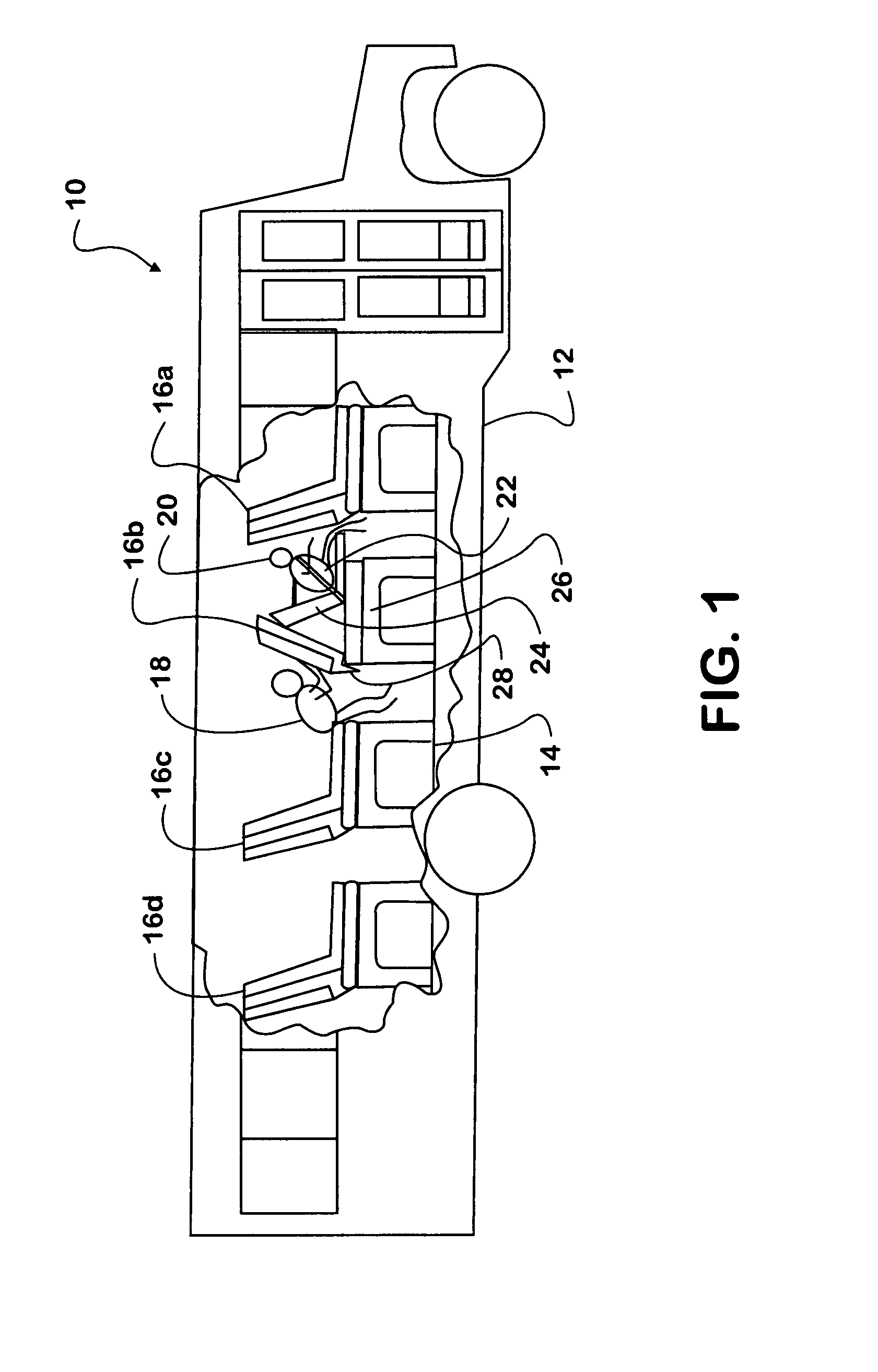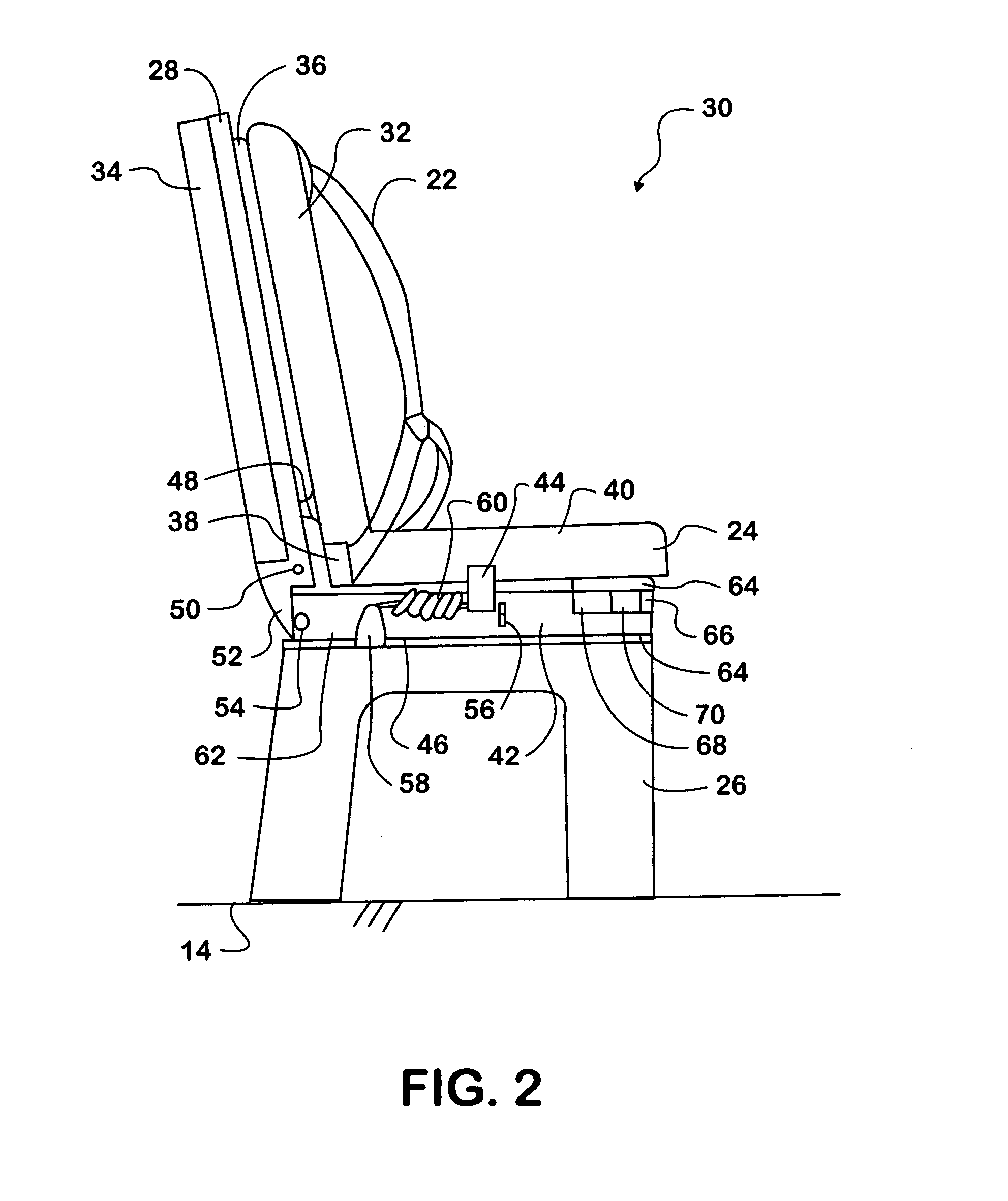Occupant restraint passenger seat assembly with load-sensing energy absorption feature
a technology of energy absorption and passenger seats, which is applied in the direction of pedestrian/occupant safety arrangements, vehicle components, vehicle arrangements, etc., can solve the problems of reducing the strength of the seat for receiving the impact of the occupant behind the seat, positioning the rear impact, and reducing the strength of the rear impact fa
- Summary
- Abstract
- Description
- Claims
- Application Information
AI Technical Summary
Benefits of technology
Problems solved by technology
Method used
Image
Examples
Embodiment Construction
[0016]Referring now to FIG. 1, a bus or other motor vehicle 10 includes a passenger carrying body 12. The body 12 includes a mounting floor 14 for the mounting and placement of passenger seating 16. Preferably, the vehicle 10 has a series of passenger seats 16a, 16b, 16c, and 16d installed on the mounting floor 14 of the vehicle body 12 arranged from the front of the vehicle to the back of the vehicle.
[0017]In FIG. 1, a rearward passenger 18 may sit in seat 16c in front of forward passenger 20 in seat 16b. While the forward passenger 20 is buckled to the seat 16b, the rearward passenger 18 in the rearward seat 16c is not buckled in. The passenger seat 16b includes integrated passenger restraint members 22 made in accordance with the present invention, and also includes a movable front frame 24 that the forward passenger 20 normally sits on and rests his or her back against.
[0018]The front frame 24 is mounted to a seat frame 26. The front frame 24 is also the attachment point for the...
PUM
 Login to View More
Login to View More Abstract
Description
Claims
Application Information
 Login to View More
Login to View More - R&D
- Intellectual Property
- Life Sciences
- Materials
- Tech Scout
- Unparalleled Data Quality
- Higher Quality Content
- 60% Fewer Hallucinations
Browse by: Latest US Patents, China's latest patents, Technical Efficacy Thesaurus, Application Domain, Technology Topic, Popular Technical Reports.
© 2025 PatSnap. All rights reserved.Legal|Privacy policy|Modern Slavery Act Transparency Statement|Sitemap|About US| Contact US: help@patsnap.com



